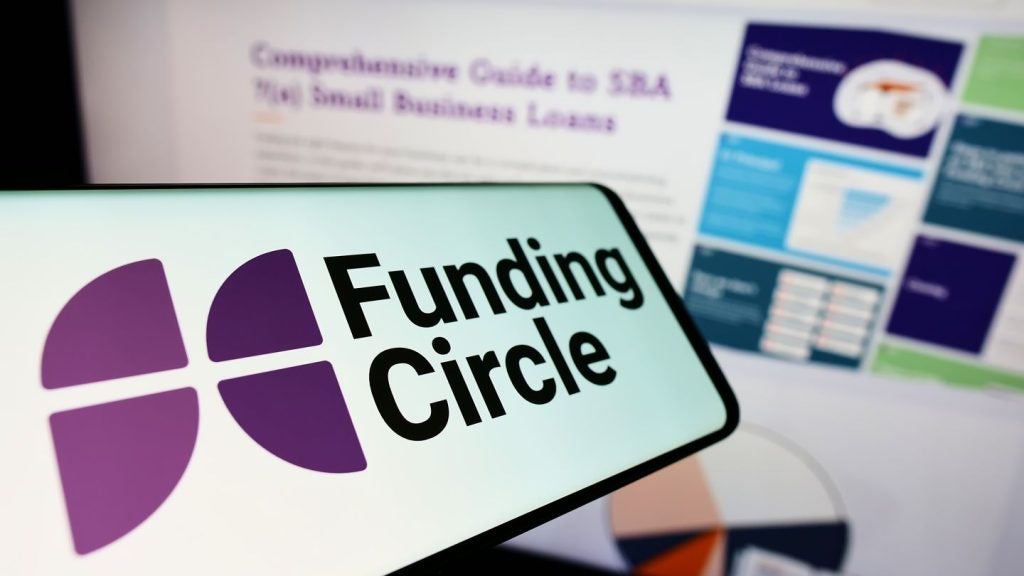
The promising recent growth in Serbia’s economy has yet to feed through to the leasing sector, although regulatory changes promise to give lessors a boost this year. By Paul Golden
At the conclusion of an International Monetary Fund (IMF) mission to Serbia in late June, mission head James Roaf referred to strong performance under Serbia’s economic programme.
Economic growth is strengthening, supported by robust investment and rising net exports. Inflation has remained low and stable, but below target on account of lower-than-expected imported prices and food prices. The external current account deficit is declining, amid robust exports. The IMF has predicted GDP growth of 2.5% in 2016.
“The authorities have continued to make important progress in fiscal consolidation,” says Roaf.
“The strong fiscal performance of 2015 continues in 2016, and all quantitative performance targets under the program for end-March were met.
“Assuming continuing improved revenue collection and prudent execution of budget expenditure in the remainder of the year, the general government deficit in 2016 should fall to about 2.5% of GDP, compared to the original target of 4%.”
Data from the National Bank of Serbia’s bank supervision department division for financial leasing supervision for the final three months of 2015 indicates that there were 16 licensed lessors in Serbia.
How well do you really know your competitors?
Access the most comprehensive Company Profiles on the market, powered by GlobalData. Save hours of research. Gain competitive edge.

Thank you!
Your download email will arrive shortly
Not ready to buy yet? Download a free sample
We are confident about the unique quality of our Company Profiles. However, we want you to make the most beneficial decision for your business, so we offer a free sample that you can download by submitting the below form
By GlobalDataOf those, nine were in 100% or majority ownership of foreign legal entities; six were in 100% or majority ownership of domestic entities, of which five were owned by domestic banks with foreign capital, and the other was jointly owned by a domestic bank with foreign capital share and a foreign legal entity.
Of the 16, 14 were founded by banks, banking group members or other financial institutions.
The total number of employees in the financial leasing sector at the end of last year was 419, down by 16 from a year earlier and some way off the high of 489 in 2009.
On 31 December 2015, balance-sheet assets of the financial leasing sector totalled RSD60.3bn (around $540m), down by 7.9% compared to 31 December 2014.
The relatively sharp drop in balance-sheet assets was primarily a result of accepting the assessment of auditors engaged in the asset quality review exercise – an assessment of balance sheets as at 31 March 2015 – undertaken by the National Bank of Serbia under the supervision of the IMF.
In the second quarter of 2015, total assets declined by 0.3% from the previous quarter earlier, although growth returned in the second half of the year.
It should be noted that in July 2015, the National Bank of Serbia adopted the Decision on Minimum Conditions for the Conclusion of the Financial Lease Agreement and the Manner of Disclosing the Lease Rental and Other Costs Arising from the Conclusion of Such Agreement, which relaxed previous conditions for lessors’ assessment of the financial condition and creditworthiness of lessees, and paved the way for a rise in credit activity.
Total balance-sheet assets of lessors were dominated by financial lease receivables (87.4%).
Relative to 2014, current assets decreased by 26.7%, reflecting chiefly a considerable fall in short-term financial assets (61%) and short-term financial lease receivables.
The share of short-term financial assets in total balance-sheet assets decreased from 7.3% in 2014 to 3.1%; the share of other current assets and deferred tax assets declined from 1.8% in 2014 to 1.4%, while the share of cash and cash equivalents increased from 3% in 2014 to 5.3%.
The capital of all lessors amounted to RSD7.8bn at the end of last year, up by 11.2% from 2014, and the share of capital in total balance-sheet liabilities increased from 10.7% in 2014 to 13%.
Long-term liabilities accounted for the largest share of total liabilities at 79.1%, down by 12.3% from 2014.
At the end of 2015, most financial lease arrangements were approved to non-financial sector companies (82.8%).
The rest of the market was divided between agriculture, public enterprises, small businesses and consumers.
There were no significant changes in the structure of lease investments by lease asset at the end of last year compared with 2014. The financing of freight vehicles, minibuses and buses continued to account for the largest share of lease investments with 34.9% (32.7% in 2014), followed by passenger vehicles – up from 25.4% in 2014 to 28%.
The financing of other movables increased slightly from 10.7% at the end of 2014 to 11.1%, while the financing of production machinery and equipment fell from 7.4% to 3.4% and the financing of agricultural machinery and equipment declined marginally from 9.8% to 9.1%.
As at 31 December 2015, the most significant share in total financial lease investments was that of transport, warehousing, information and communications at 35.6% (30.7% in 2014).
The value of financial lessors’ portfolio was RSD52.7bn on 31 December 2015, down by 6.1% from the end of 2014. Past due gross receivables accounted for 11.9% of gross receivables in respect of financial leasing (15.1% in 2014), while the net book value of past due receivables was RSD1.5bn.
At the end of last year, receivables past due more than 90 days made up the largest part of total past due receivables. Their gross amount accounted for 10% of total gross financial lease receivables (13.2% in 2014), while their net book value made up 1.4% of the total portfolio compared with 2.7% in 2014.
The value of returned lease assets was RSD916.6m which, together with outstanding balances from previous years, came to almost RSD1.7bn or 3.2% of the portfolio. Of the returned lease assets, lessors released 22.1%, sold 48.9% and rented 1.1%.
As at 31 December 2015, the stock of returned lease assets represented 0.6% of the portfolio and 3.9% of capital (1.2% of the portfolio and 9.6% of capital at 31 December 2014).
In late 2015 the European Bank for Reconstruction and Development (EBRD) confirmed that it was providing a senior loan of up to €15m to Intesa Leasing, a subsidiary of Banca Intesa, the largest bank in Serbia.
The project aims to support micro SMEs by increasing the availability of long-term lease financing for purchasing equipment, commercial vehicles and real estate for commercial purposes.
The loan is expected to expand long-term lease financing to these enterprises, particularly those located outside the capital. The project is also expected to contribute to promoting an improved regulatory framework for leasing activities through a policy dialogue component.
In March 2015 the European Investment Bank (EIB) signed two loans totalling €80m in Serbia with Société Générale Bank Serbia and Sogelease Serbia in support of small and medium-sized enterprises, mid-caps and infrastructure schemes promoted by local authorities. The loans were designed to assist Serbia in its efforts to integrate into the EU.
A €60m loan was signed with Société Générale Bank Serbia for the financing of projects by SMEs and medium-sized companies involving the knowledge economy, environmental protection, health, education and services and also to support small and medium-scale infrastructure schemes promoted by local authorities in those fields. A minimum of 70% of the loan amount has been allocated to SMEs and mid-cap projects.
The EIB also signed a loan of €20m of a total of €40m already approved with Sogelease Serbia with features similar to the one mentioned above.
Since 2009, the EIB has signed €1.2bn of loans with banks and leasing companies in Serbia, supporting investments in SMEs, mid-caps and local authorities.
Boris Stevic, president of the executive board of Sogolease Serbia, explains that the financial leasing market in Serbia is immature compared to other European countries.
“Following its beginning in 2004, the market steadily grew but the global economic crisis stopped that trend. Although there is room for optimism and some progress has been noticed, for the further development of the market it is necessary to improve the existing law on financial leasing, as well as to harmonise regulations in this area with the EU regulations.”
Stevic observes that the Serbian leasing association has developed a draft law on financial leasing with the support of international financial institutions, and it has been announced that the amendments will be adopted by the end of this year – a move he says will greatly improve conditions for further growth of leasing business in Serbia.
“The most significant developments in this market over the last 12 months have been the harmonisation of the laws in accordance with the requirements of the leasing industry and the participation of our companies in the creation of the civil code, as well as the equalisation of leasing and crediting for purchasing machines and equipment for small and medium-sized enterprises, which provides a positive impulse to the domestic market of financial leasing,” he adds.
Stevic expects that the new law will enable companies registered for financial leasing to perform other activities, such as operating leasing or loans.
“In market terms, there was a significant increase in activity in the first quarter of 2016 – up by 40% compared to the same period last year,” he says.
“Results for the first quarter of 2016 indicate that the recovery is the result of growth in sales of commercial vehicles and the launch of large scale construction projects that have allowed leasing companies to finance the purchase of machinery.
“Last year’s growth compared to 2014 was only 3.5%, but the most recent data indicates that we can expect far greater growth in 2016.”
When asked whether the Serbian leasing market has been affected by economic problems elsewhere in Europe, the president of the executive board of Sogolease Serbia acknowledges that it has had a particularly severe impact on car sales.
“Since the financial leasing market in Serbia finances three quarters of all purchases of commercial vehicles, the leasing market is growing in line with the growth of car sales,” says Stevic.
“The total number of leasing companies operating in our country has not significantly changed since the pre-crisis period, but several have reduced new financing activity.
“The leasing market has also been shaken by the Greek crisis, with three leasing companies owned by Greek banks significantly reducing activity.”
Current indicators suggest that it is realistic to expect growth of the leasing market this year. Customers have been purchasing new commercial vehicles and the financing of machinery for large construction projects has received a considerable boost.
With the beginning of implementation of the new law on financial leasing, allowing companies to conduct a wider range of business, we can certainly expect further growth in the domestic market.
“The key players in the domestic market are leasing companies owned by banks,” explains Stevic.
“However, there are two independent companies, as well as one captive company. Leasing companies owned by banks have most easily overcome the consequences of the financial crisis and have survived in the market because they had strong institutions to back them, while smaller companies drastically reduced their activities.”
On whether the Serbian government has taken any direct or indirect action to support the lease finance industry, the president of the executive board of Sogolease Serbia observes that financial leasing in Serbia is under the control of the Central Bank and that the regulatory framework is perhaps too conservative and still preventing companies from engaging in other activities.
“Our legislative framework is changing in the direction of liberalising the activities of leasing companies and this is a consequence of government support to the development of the domestic leasing market,” he concludes.
“However, leasing companies suffered the greatest losses in financing equipment during the economic crisis and therefore are very conservative in the process of approval of funding of the lease objects and are focused on the financing of vehicles.” <







